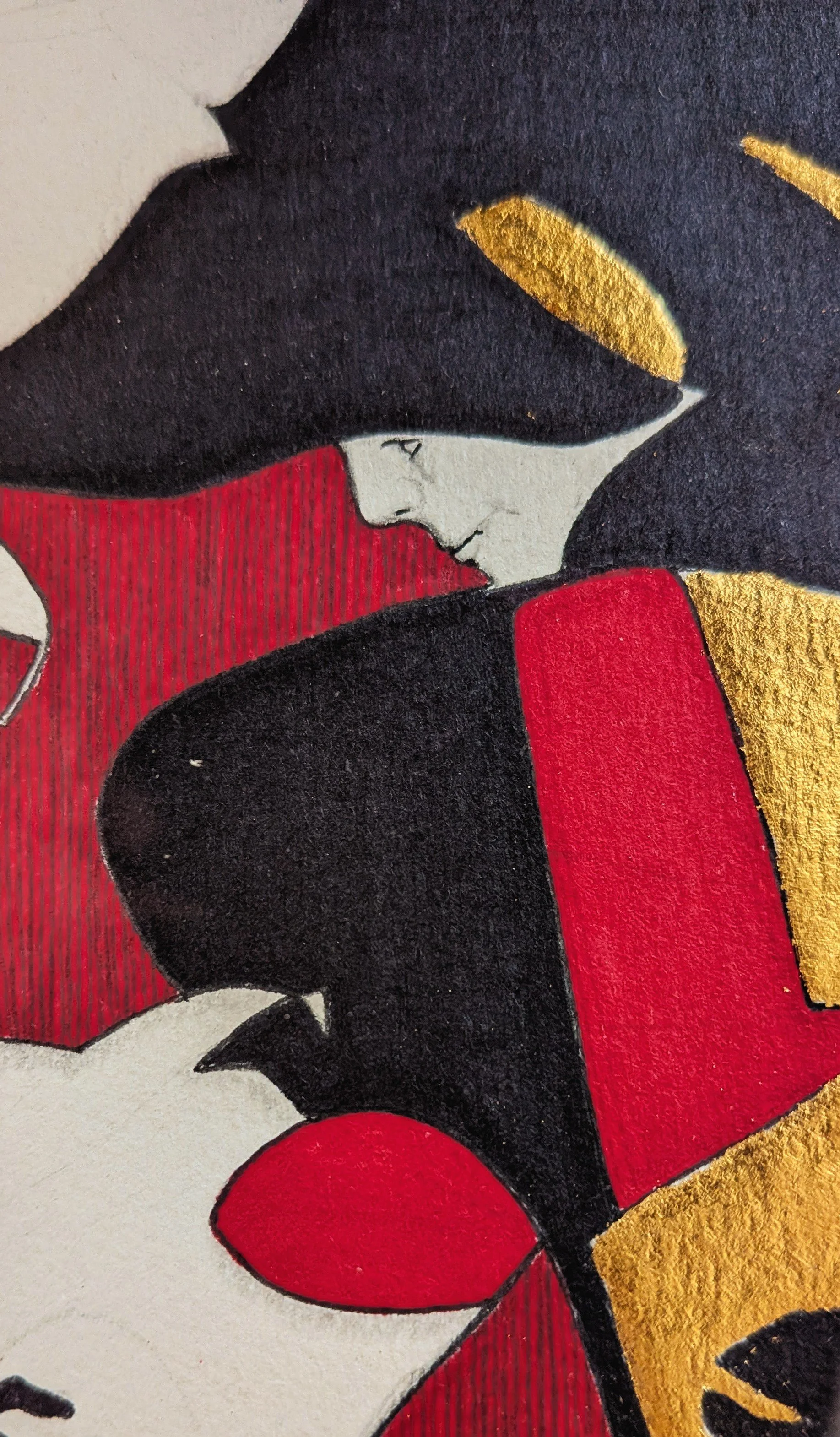 Image 1 of 9
Image 1 of 9

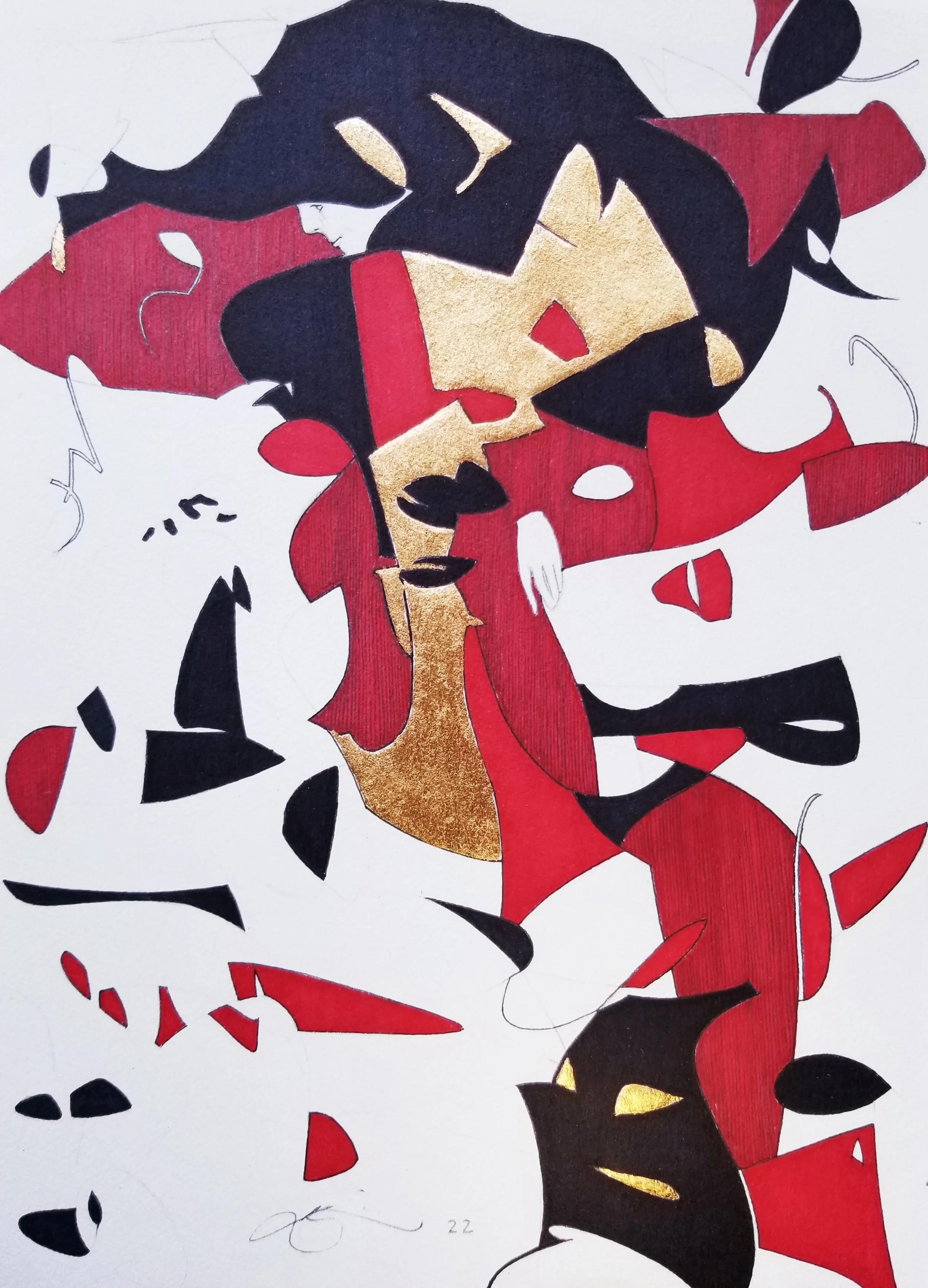 Image 2 of 9
Image 2 of 9

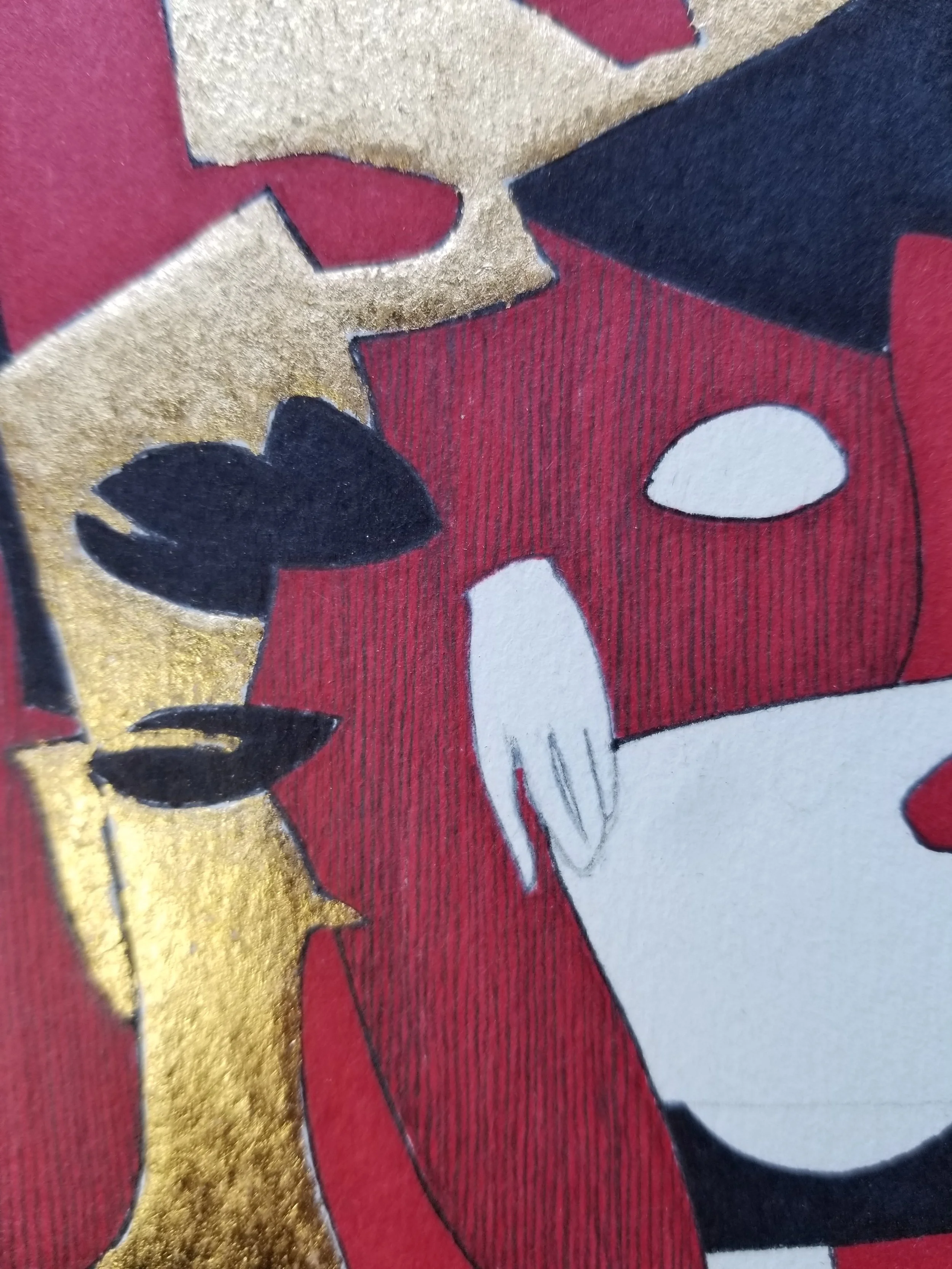 Image 3 of 9
Image 3 of 9

 Image 4 of 9
Image 4 of 9

 Image 5 of 9
Image 5 of 9

 Image 6 of 9
Image 6 of 9

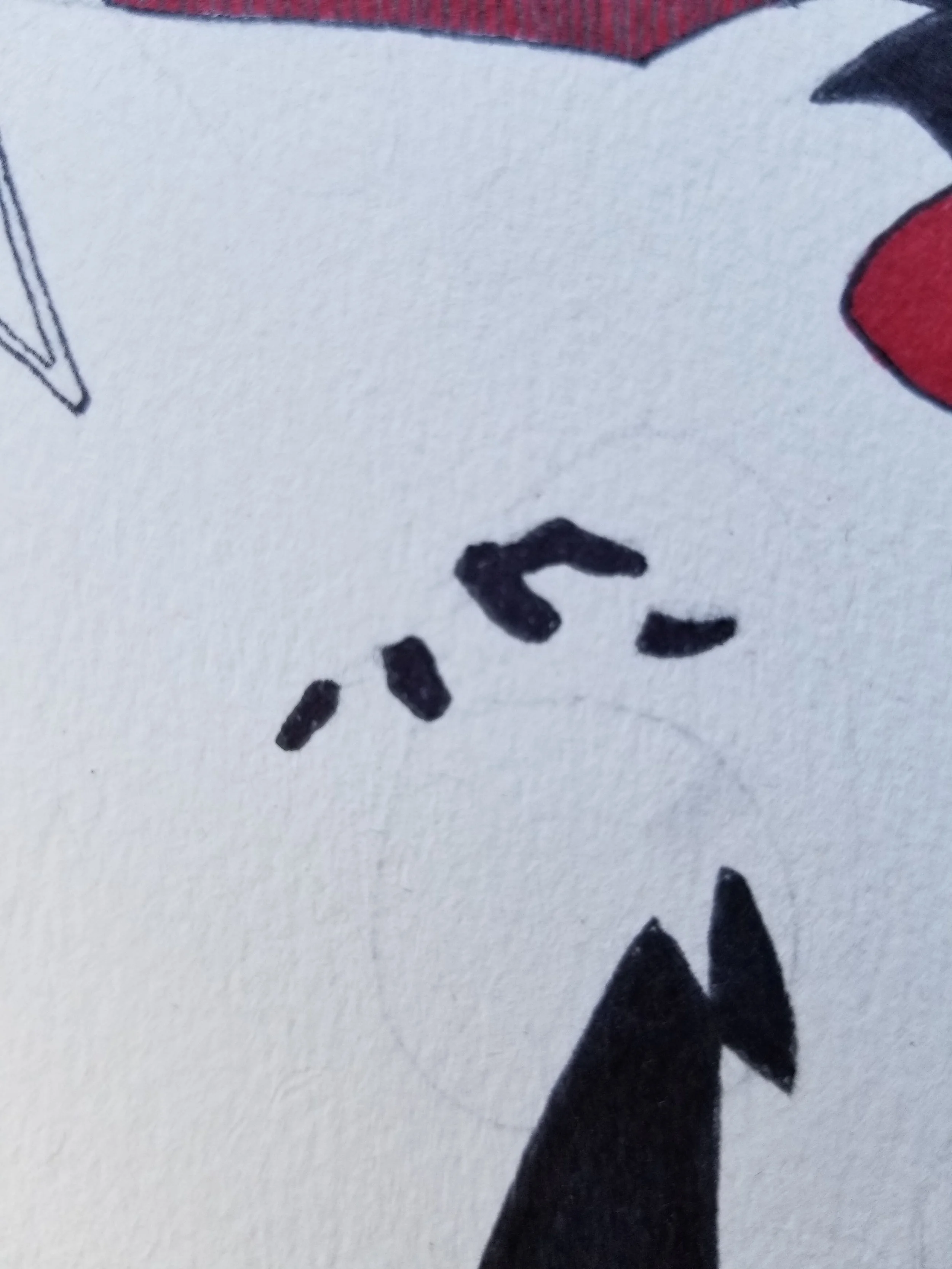 Image 7 of 9
Image 7 of 9

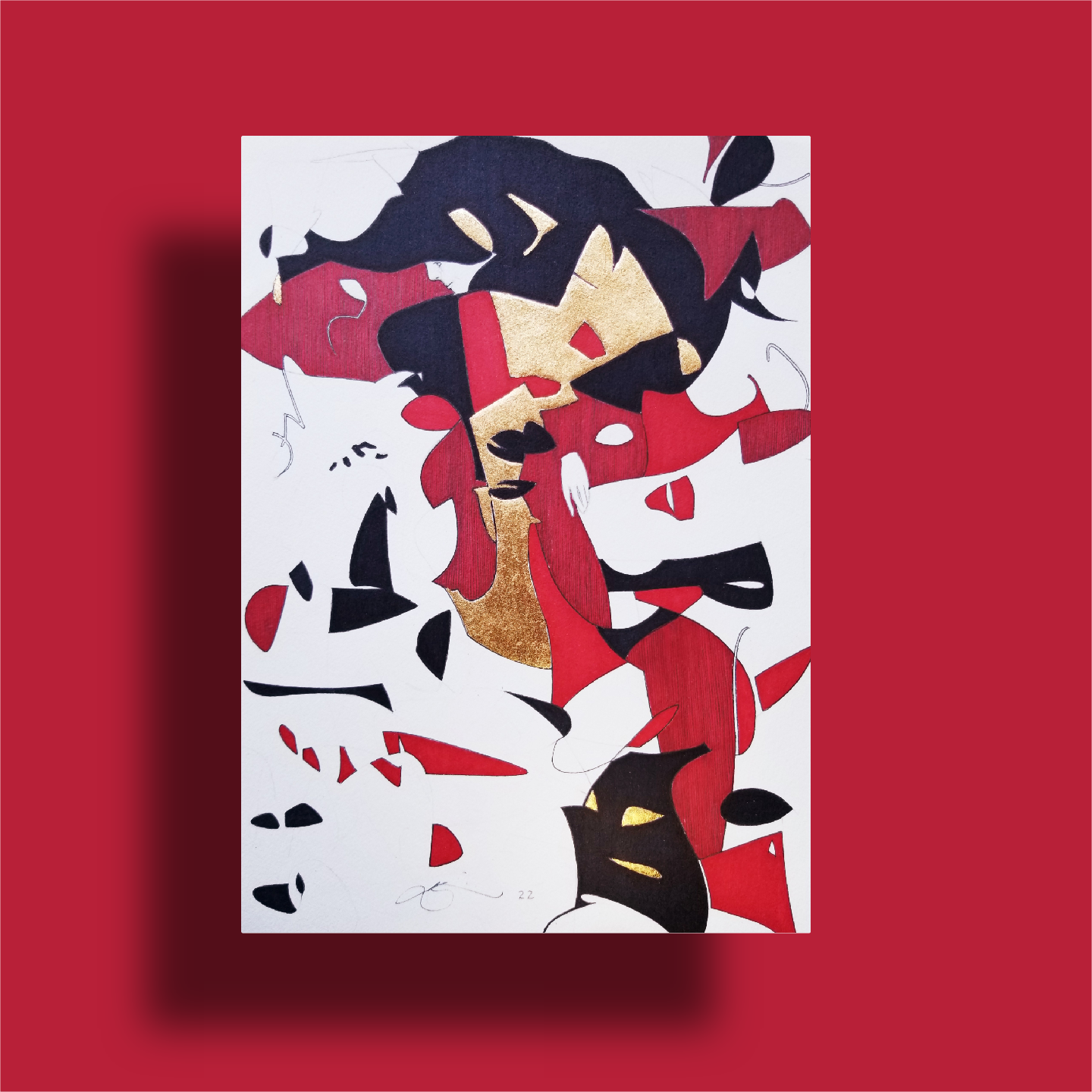 Image 8 of 9
Image 8 of 9

 Image 9 of 9
Image 9 of 9










Remorse
In this striking work, the spirit of l’automatisme—a movement that, for nearly a century, has lingered at the periphery of mainstream art discourse—reawakens. This piece stands as a pivotal moment in the artist’s ongoing project to revitalize and reinterpret the legacy of automatist expression, inviting viewers to witness the evolution of art history in real time.
At first glance, the composition’s dynamic interplay of bold reds, deep blacks, and luminous golds appears to center on the commanding upper figure. Yet, after two years of living with the work, a remarkable truth has emerged from the depths of the artist’s subconscious process: the true protagonist is not the dominant form above, but a much smaller, hooded figure nestled just below the fingers on the left, head bowed in quiet surrender. This subtle silhouette, easily overlooked, is in fact the heart of the piece and the embodiment of its title—Remorse.
Through spontaneous gesture and intuitive line-dropping, Kire channels the original automatist ethos, allowing the artwork to emerge organically, unfiltered by conscious control. The resulting forms, energetic and fluid, evoke a sense of disintegration—a visual metaphor for the fragmentation and transformation that define both personal and collective experience in our era. The belated recognition of the hooded figure is itself a testament to the authenticity and depth of the automatist process: meaning is not imposed, but discovered, sometimes only after years of reflection.
The relationship between the two figures—one vast and imposing, the other small and penitent—captures the psychological reality of remorse. We often feel remorse most acutely when confronted by a force greater than ourselves, a presence that compels us to confront our conscience and seek repentance. Here, the larger figure looms as a symbol of that external or internal authority, its proximity intensifying the emotional gravity pressing down on the bowed silhouette below.
This theme of disintegration and self-reckoning resonates powerfully with the social realities of the present day. The artwork becomes a mirror for our times, reflecting the dissolution of old certainties and the emergence of new, uncharted possibilities. In this sense, the piece is not only a revival of a historical movement, but also a commentary on the shifting landscapes—cultural, psychological, and societal—that shape our world.
For the discerning collector or art historian, this work offers a rare convergence: a bold contemporary statement rooted in a profound understanding of art’s evolutionary currents, and an authentic, unrepeatable revelation born of the artist’s own subconscious journey. It is an invitation to participate in the ongoing dialogue between past and present, tradition and innovation—and to witness, firsthand, the value of originality and self-discovery that is so rarely seen in the contemporary art scene.
In this striking work, the spirit of l’automatisme—a movement that, for nearly a century, has lingered at the periphery of mainstream art discourse—reawakens. This piece stands as a pivotal moment in the artist’s ongoing project to revitalize and reinterpret the legacy of automatist expression, inviting viewers to witness the evolution of art history in real time.
At first glance, the composition’s dynamic interplay of bold reds, deep blacks, and luminous golds appears to center on the commanding upper figure. Yet, after two years of living with the work, a remarkable truth has emerged from the depths of the artist’s subconscious process: the true protagonist is not the dominant form above, but a much smaller, hooded figure nestled just below the fingers on the left, head bowed in quiet surrender. This subtle silhouette, easily overlooked, is in fact the heart of the piece and the embodiment of its title—Remorse.
Through spontaneous gesture and intuitive line-dropping, Kire channels the original automatist ethos, allowing the artwork to emerge organically, unfiltered by conscious control. The resulting forms, energetic and fluid, evoke a sense of disintegration—a visual metaphor for the fragmentation and transformation that define both personal and collective experience in our era. The belated recognition of the hooded figure is itself a testament to the authenticity and depth of the automatist process: meaning is not imposed, but discovered, sometimes only after years of reflection.
The relationship between the two figures—one vast and imposing, the other small and penitent—captures the psychological reality of remorse. We often feel remorse most acutely when confronted by a force greater than ourselves, a presence that compels us to confront our conscience and seek repentance. Here, the larger figure looms as a symbol of that external or internal authority, its proximity intensifying the emotional gravity pressing down on the bowed silhouette below.
This theme of disintegration and self-reckoning resonates powerfully with the social realities of the present day. The artwork becomes a mirror for our times, reflecting the dissolution of old certainties and the emergence of new, uncharted possibilities. In this sense, the piece is not only a revival of a historical movement, but also a commentary on the shifting landscapes—cultural, psychological, and societal—that shape our world.
For the discerning collector or art historian, this work offers a rare convergence: a bold contemporary statement rooted in a profound understanding of art’s evolutionary currents, and an authentic, unrepeatable revelation born of the artist’s own subconscious journey. It is an invitation to participate in the ongoing dialogue between past and present, tradition and innovation—and to witness, firsthand, the value of originality and self-discovery that is so rarely seen in the contemporary art scene.
Framed with double raised mat. Black wooden frame with non-glare acrylic. Ready to hang. Ship in box.